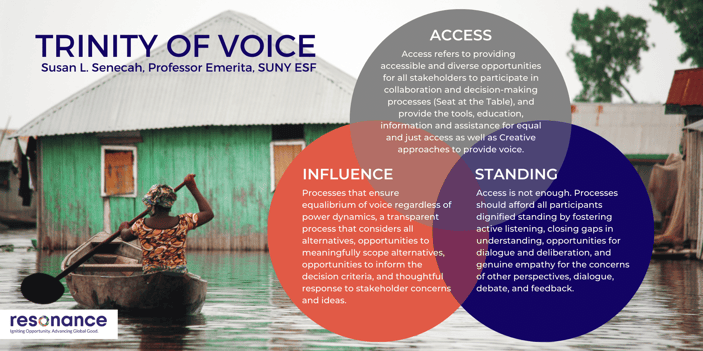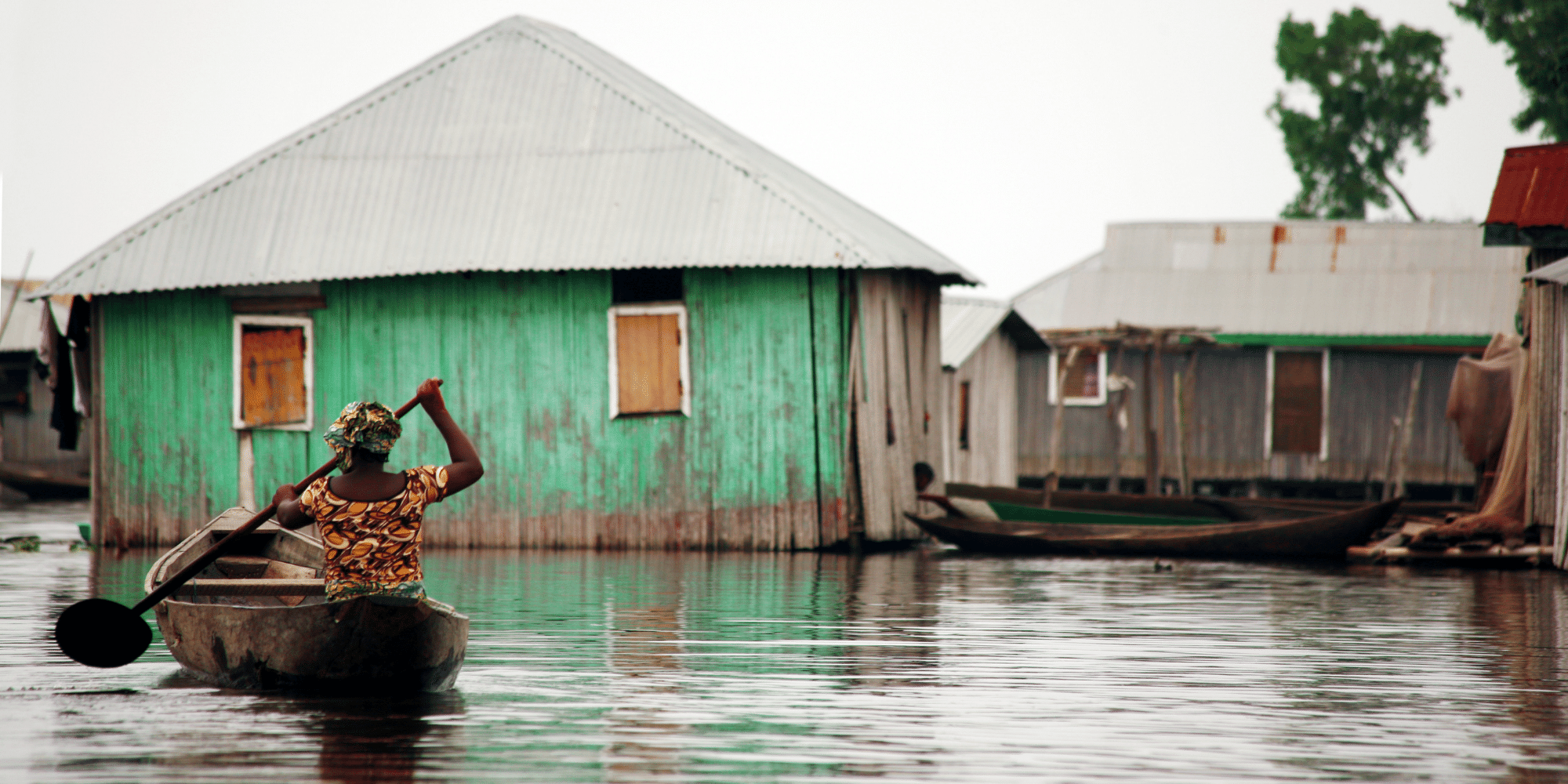The 2022 United Nations Climate Change Conference (COP27) was held November 6-18 in Sharm El-Sheikh, Egypt. If you followed news coverage, and discussions by the UN, changemakers, activists, scientists, and science journalists, then you know the reports in the weeks and days leading into deliberations frame the climate situation as dire.
The provisional State of the Global Climate Report, issued on the opening day of COP27, is considered the definitive annual assessment of the Earth’s climate. Many reports derived from this assessment were released in the weeks and days leading into the event.
This includes a report released by the UN World Meteorological Organization (WMO), which reported the last eight years are on track to be the warmest on record, fueled by increased Greenhouse Gas (GHG) Emissions concentrations and accumulated heat.
With this trend comes a warning: sea level rises are accelerating, and many glaciers have passed a tipping point, “with melting set to continue for hundreds, if not thousands, of years with major implications for water security,” writes Kevin O’Sullivan, Environment and Science Editor of the Irish Times.
Dubbed the huge ‘glacier melt,’ headlines are designed to grab our attention, and to perhaps galvanize COP27 negotiations into committed action, including those that pull from the report’s predictions that glaciers like Yosemite and Kilimanjaro, will be gone within the next 23 years.
Additional reports from this assessment confirmed that with all major greenhouse gases at record levels in the atmosphere, the planet is heading for a potentially catastrophic warming of 2.5 degrees above the pre-industrial baseline this century.
This means more extreme weather events, more sea level rise, more catastrophic flooding, more drought, impacts on biodiversity, fisheries threats, and multi-ecosystems collapse. It is clear why climate change is considered a wicked, wicked problem.
UN secretary general Antonio Guterres said in response to the WMO findings: “As Cop27 gets under way, our planet is sending a distress signal. The latest State of the Global Climate report is a chronicle of climate chaos.”
Are We on Track to Meet The 1.5°C 'Red Line'?
It is becoming more evident that we are not on track to meet the 1.5°C Red Line negotiated as part of COP21 in 2015, the demarcation that made its way into the international Paris Agreement.
This target was delineated with the understanding that signatory States would be committed to efforts that would result in curbing temperature rise beneath this line, which was a more ambitious goal than the 2°C target that was deemed more likely going into COP15.
The 1.5°C target factored in the best understanding of climate science at that time and a push from countries most vulnerably impacted by climate change.
In 2018, climate scientists convened by the UN published a report warning us of what is likely to happen beyond 1.5° Celsius of warming. Models are predicting specifically sea level rise by 10 to 30 inches (26 to 77 centimeters), putting more than 10 million more people at risk from coastal flooding and coastal storms. Heat waves will expose fourteen percent of the world population to extreme heat at least once every five years..png?width=713&height=418&name=Slide%2074H%20(1).png)
Above this temperature, scientists predict 90 percent of all coral reefs could die out, and about seven percent of the Earth’s land area could shift to a new biome, with grasslands turning to desert, tundra turning to forest, etc. (Delger Erdenesanaa, InsideClimateNews). Every half a degree Celsius in temperature rise can accelerate these outcomes even more.
And of course, the impacts in some areas will be more pronounced than in others.
The UN WMO report, with input from the European Union’s Copernicus Climate Change Service, states average temperatures in the European region have risen by 0.5 degrees Celsius (0.9 degrees Fahrenheit) each decade since 1991.
Described as a “heatwave hubspot,” Europe has been experiencing record-breaking, extensive heatwaves and drought that have fueled wildfires and left soils parched, a contributing factor to increased flooding when there are bouts of intensive rainfall.
“Europe presents a live picture of a warming world and reminds us that even well-prepared societies are not safe from impacts of extreme weather events,” WMO secretary-general Petteri Taalas said in a statement.
Vulnerable Places, Net Zero, and Senecah's Trinity of Voice (TOV)
Many of the most vulnerable to climate change impacts, compounded by other socio-economic and environmental vulnerabilities, are not as well-prepared. This disadvantage often contributes to a comparative lack in standing, access, and influence, or what citizen engagement theorist and practitioner Susan Senecah calls “Trinity of Voice (TOV).”
This has left many countries, particularly small, vulnerable island and archipelago states already experiencing climate impacts feeling they have less agency in negotiations, particularly at the table with the more powerful big emitters.
That’s not to say they have had no influence to date.
In fact, The Economist this month reiterated many of the recent projections that we are not on track to reach the 1.5°C climate target. This is not novel speculation or the gist of the piece.
Instead, the article details the ways in which small island states and some vulnerable continental countries, particularly of the global South, were able to unexpectedly negotiate this target with large countries as the red line – the “walk away from the table if we don’t get it” item as part of COP21 in 2015 (and thus referenced in the Paris Agreement).
The 2018 report referenced above not only detailed what impacts would look like should the threshold be broached, thus reinforcing the 1.5 brigade’s tough stance, but it also weighed in on emissions pathways.
What is Net Zero?
The conclusions of this report formalized the idea that in order for the 1.5°C target to be met, greenhouse gas emissions must be cut to as close to zero as possible by the middle of the century, with any remaining emissions re-absorbed from the atmosphere, by oceans and forests for instance.
The "Net-zero by 2050" mantra galvanized politicians and activists, as well as businesses and the financial sector, with "net-zero-by-2050" pledges and targets adopted by more than 70 countries, including the biggest polluters – China, the United States, and the European Union, covering about 76% of global emissions and 70% of the economy by 2021.
More than 3,000 businesses and financial institutions are working with the Science-Based Targets Initiative to reduce their emissions in line with climate science. And more than 1000 cities, over 1000 educational institutions, and over 400 financial institutions have joined the Race to Zero, pledging to take rigorous, immediate action to halve global emissions by 2030.
Despite the urgency around the 1.5°C target, the UN Environment Programme (UNEP) predicts the range of temperatures by 2100 will be an estimated 2.8°C under current policies, and 2.4°C if countries live up to all the commitments about future policy made to the UNFCCC in Paris and since.
Going into COP26 last year in Glasgow, many Paris signatories were framing the 1.5°C target as attainable, and with pressure and political will, and increasing movement away from fossil fuels, we could keep warming below or at this threshold.
But the writers of The Economist piece suggest that this target, which was once “something to be pursued,” has become a mere ‘totemised…stretch goal.’
Elaborating, the publication states, “An emissions pathway with a 50/50 chance of meeting the 1.5°C goal was only just credible at the time of Paris. Seven intervening years of rising emissions mean such pathways are now firmly in the realm of the incredible.”
Said Secretary General Antonio Guterres at the opening of COP27,
“The science is clear, any hope of limiting temperature rise to 1.5 degrees Celsius means achieving global net zero emissions by 2050. But that 1.5°C goal is on life support and the machines are rattling.”
COP27 and Net Zero Commitments and Actions
During the climate talks in Paris in 2015, the role of High-Level Champion was created. These are appointees who serve two-year terms and bridge between the Presidency and the parties. Also created was the Marrackech Partnership for Global Climate Action, which serves under the leadership of the High-Level Champions.
Guided by the long-term goals of the Paris Agreement and undertaken in the context of the 2030 Agenda for Sustainable Development, the Marrackech partnership enables collaboration between governments and the cities, regions, businesses, and investors that must act on climate change. The aim is to strive to reach the 1.5 °C temperature goal by decreasing emissions, while increasing resilience against climate impacts.
Nearing the close of COP 27, the UN Climate Change High-Level Champions took stock of the contribution of non-State actors with their closing event – COP27 Action Agenda: Progress & Priorities.
This event focused on accountability, fairness, and an assessment of non-State progress at COP27. It detailed the ways non-State actors are driving holistic action towards meeting the ambitions of the agenda, how the Global Climate Action Agenda is contributing to tangible progress, and what the plans look like to take stock of progress at a global level. This is also outlined with specificity in a final Summary of Global Action at COP27 Report.
What is Needed to Achieve Net Zero Goals
Regarding achieving Net Zero, this report was important not only in describing activities and initiatives underway, but also in making bold claims, as follows:
- Time is running short to halve emissions by the end of this decade. Net Zero will require fundamental adjustments to society and the economy and increased cross-sector collaboration.
- To that end, the direction and guidelines set by national governments is of paramount importance in translating this groundswell of non-Party stakeholder action to the level of transformation that the challenge demands; without such effort, voluntary action cannot transition sectors at the speed required.
- Policy at the sectoral level is therefore the essential enabling condition that is required for non-Party stakeholder efforts to set in motion the ambition loop at scale.
- Growing alignment, as called for in the recommendation for regulatory changes in the report of the UN Secretary General’s High-Level Expert Group on the Net-Zero Emissions Commitments of Non-State Entities, speaks to this need.
This final report also affirmed that our work at Resonance is an important part of the Net Zero puzzle.
How Do Firms like Resonance Play a Role in Global Net Zero Goals?
The High-Level Champions and the Marrackech Partnership made it clear that there are numerous actions are already underway in the real economy, including those mobilized through the Race to Zero and Race to Resilience, to deliver the required technology innovations and production and consumption changes to limit global warming to 1.5°C and enhance resilience.
They also noted Sharm el-Sheikh made it clear that the climate and development agendas are irrefutably linked, adding
“There can be no climate action without a people-centered approach that delivers prosperity, builds resilience, addresses human needs across health, security, and well-being in a manner that is appropriate to local and regional circumstances.”
This is how Resonance can play an important role in the coming years: by continuing to facilitate, design, implement, and nurture high-performing cross-sector partnerships that deliver open and inclusive innovation, innovative finance, and entrepreneurial-development solutions for real people in real places.
We have long believed that integrating business and development objectives with social and environmental impact goals is what is necessary to drive sustainable impact in the end. And we will continue to explore with our clients and changemakers the many ways we can together help realize a Net Zero future.



